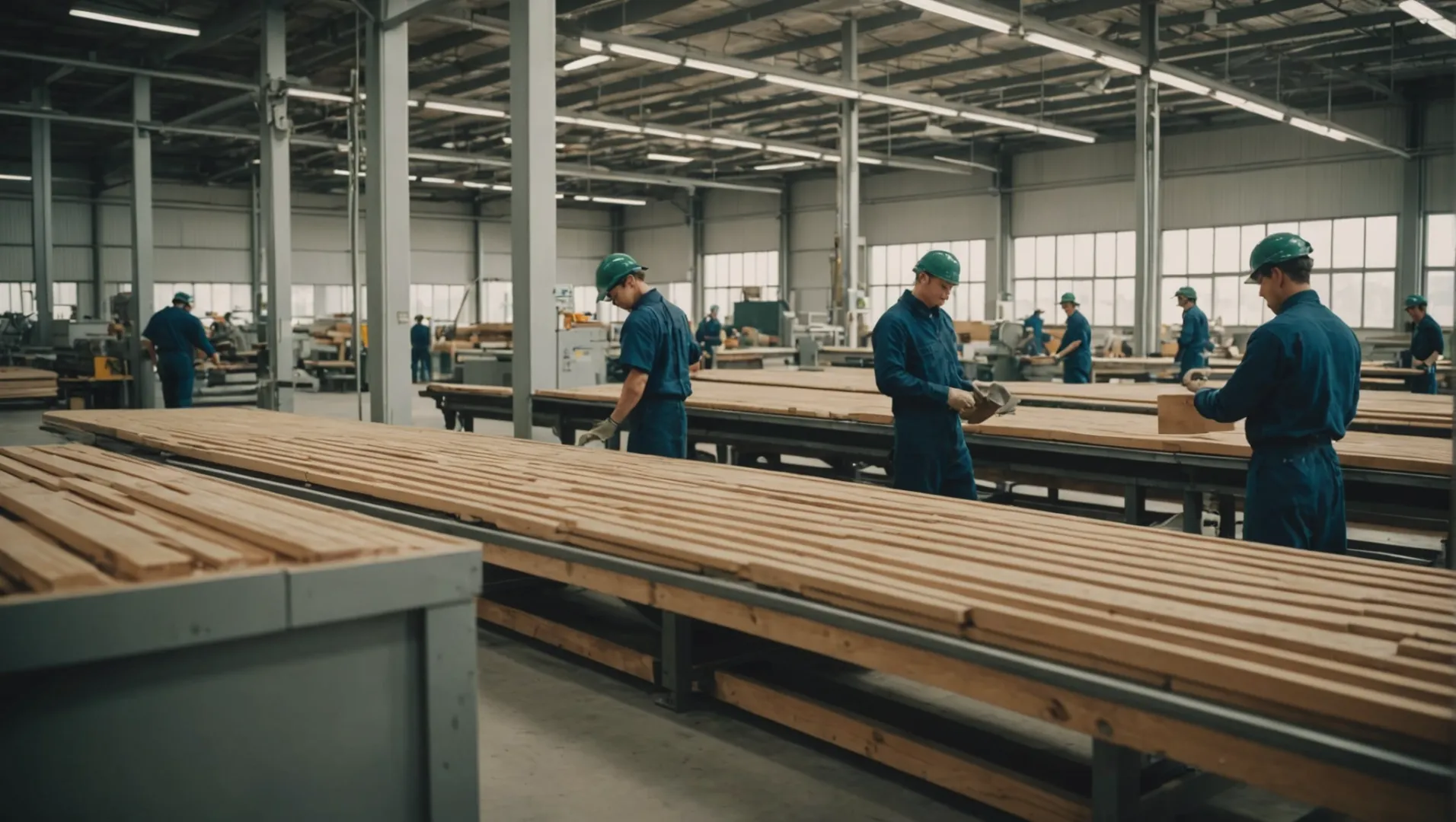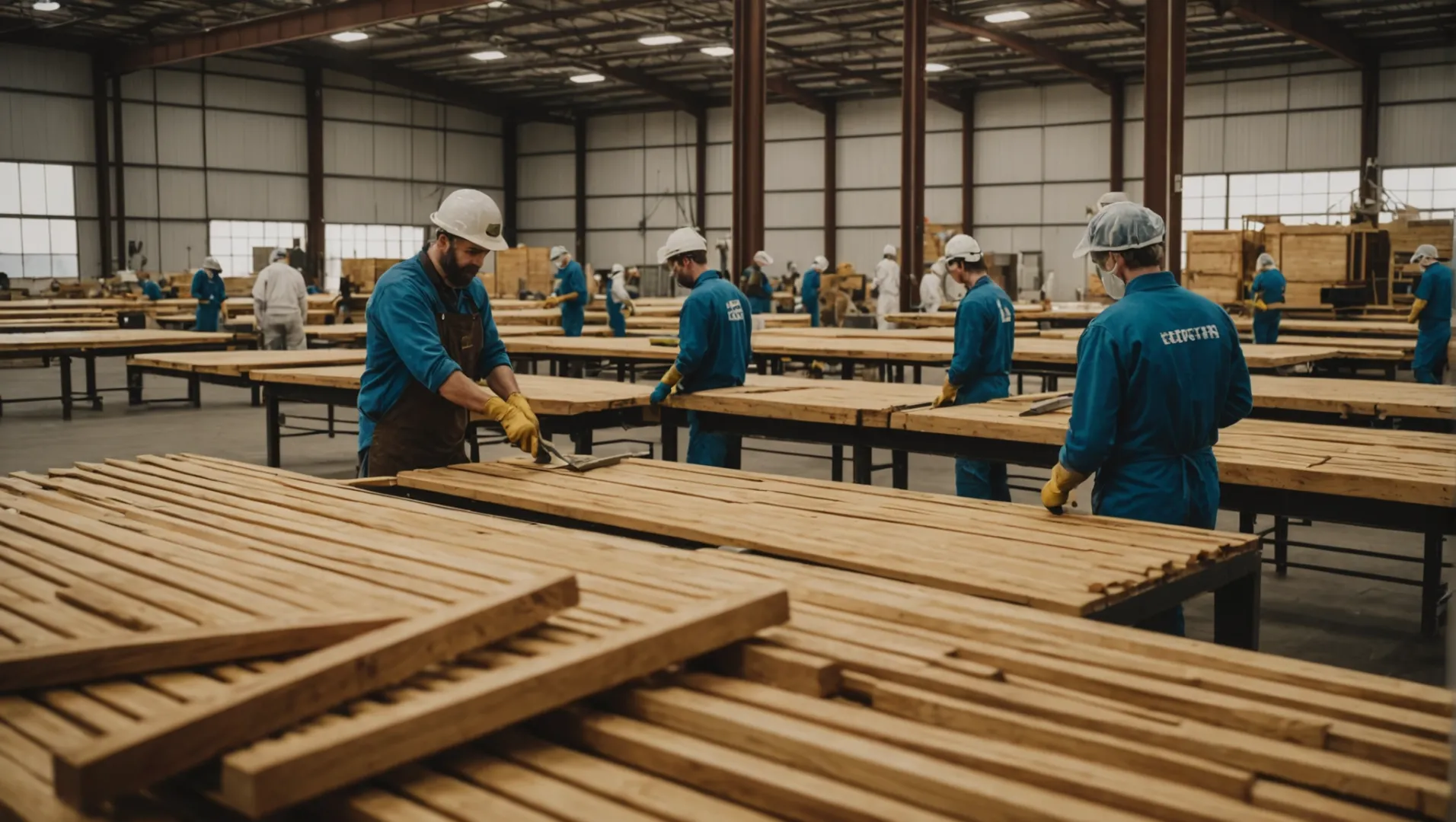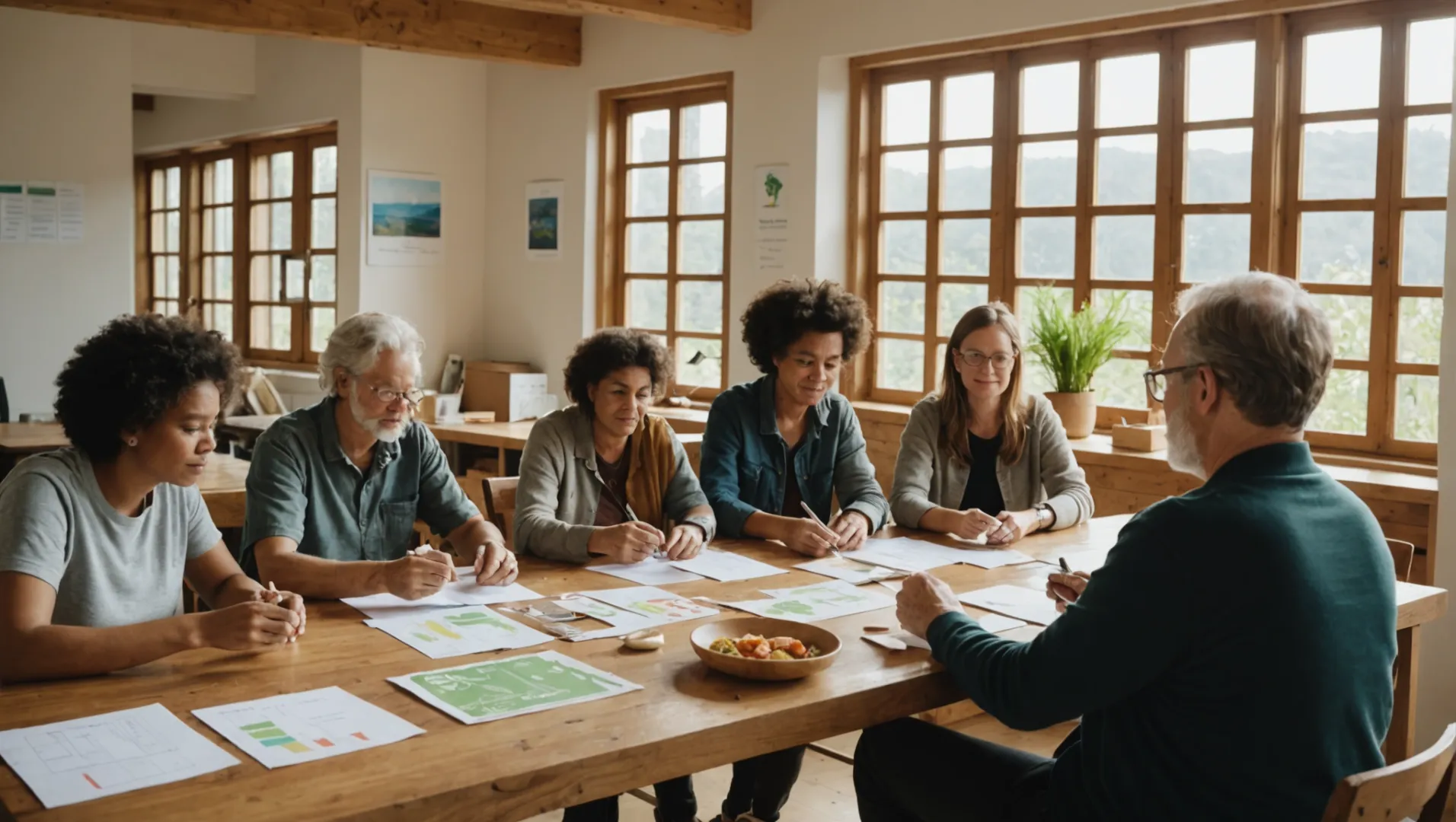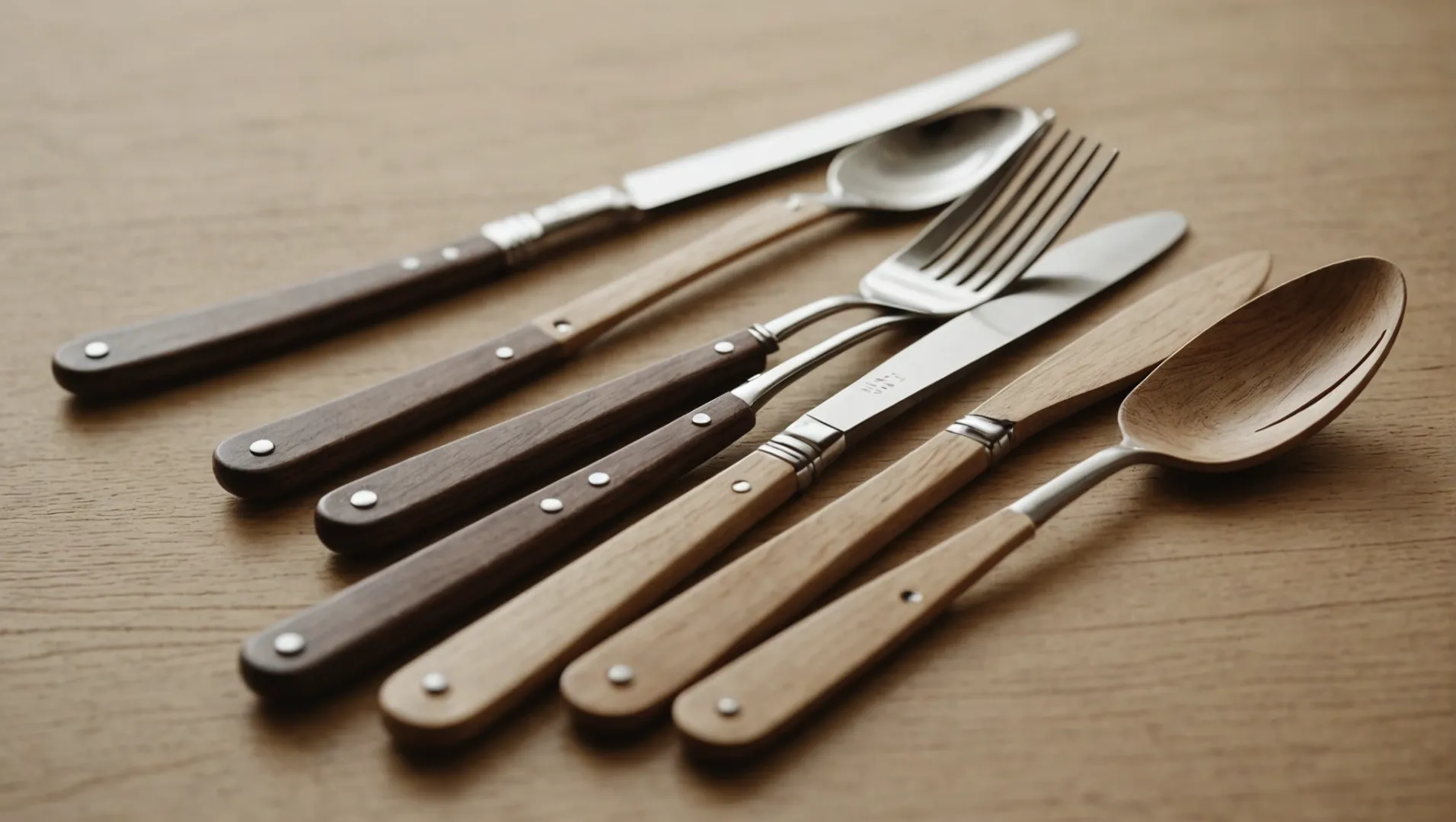
In a world that’s increasingly focused on sustainability, have you ever considered the impact of your cutlery choices?
Disposable wooden cutlery can reduce its carbon footprint by using sustainably sourced wood, applying eco-friendly manufacturing processes, and ensuring biodegradability. These practices decrease environmental impact compared to traditional plastic utensils.
While this succinctly addresses how wooden cutlery can be more sustainable, there’s much more to consider. From production processes to consumer education, each step plays a crucial role in enhancing the eco-friendliness of these products. Let's delve deeper into how these factors interplay.
Wooden cutlery is biodegradable and compostable.True
Wooden cutlery decomposes naturally and can be composted, unlike plastic.
What Are the Environmental Benefits of Wooden Cutlery Over Plastic?
Discover how wooden cutlery offers a sustainable edge over plastic utensils, making it a better choice for the planet.
Wooden cutlery is environmentally beneficial due to its biodegradability and use of sustainably sourced materials, contrasting with the long-lasting environmental harm caused by plastic utensils.

Biodegradability and Decomposition
One of the primary environmental advantages of wooden cutlery is its biodegradability. Unlike plastic, which can take centuries to decompose, wooden utensils break down naturally and return to the soil without leaving toxic residues. This rapid decomposition reduces landfill waste and lessens environmental pollution.
When disposed of properly, wooden cutlery can often be composted, adding nutrients back into the soil. Composting facilities handle wood waste efficiently, turning discarded utensils into rich compost that can be used in agriculture and landscaping.
Sustainable Sourcing and Production
Wooden cutlery is crafted from renewable resources. Responsible manufacturers source wood from sustainably managed forests1, ensuring that the trees are replanted and forests are maintained for future generations. This sustainable approach contrasts sharply with plastic production, which relies on fossil fuels.
Moreover, wooden cutlery production tends to have a smaller carbon footprint compared to plastic due to less energy-intensive processes. Techniques like using solar energy and reducing water usage during manufacturing further enhance their eco-friendliness.
Impact on Ocean Pollution
Plastic pollution in oceans is a critical environmental concern. Marine animals often mistake plastic waste for food, leading to fatal outcomes. Wooden cutlery, however, does not contribute to this problem, as it decomposes before reaching waterways or breaks down quickly if it does.
Switching to wooden cutlery can significantly reduce marine pollution, aiding in the preservation of aquatic life and the health of our oceans.
Comparisons with Plastic Cutlery
| Feature | Wooden Cutlery | Plastic Cutlery |
|---|---|---|
| Biodegradability | Biodegradable, compostable | Non-biodegradable |
| Resource Origin | Renewable resources | Non-renewable fossil fuels |
| Production Emissions | Lower carbon emissions | Higher carbon emissions |
| Environmental Impact | Minimal pollution risk | Significant pollution risk |
These comparisons highlight why wooden cutlery is an environmentally superior choice. By prioritizing sustainable materials and processes, we can collectively reduce our carbon footprint and protect natural ecosystems.
Consumer Role in Sustainability
Consumers play a crucial role in promoting sustainability by choosing eco-friendly products. Awareness of proper disposal methods and opting for certified eco-friendly utensils2 can significantly amplify these benefits. Educated consumers also drive demand for sustainably produced goods, encouraging manufacturers to adopt greener practices.
Wooden cutlery is biodegradable and compostable.True
Wooden utensils break down naturally, adding nutrients back into the soil.
Plastic cutlery has lower carbon emissions than wooden cutlery.False
Plastic production is more energy-intensive, leading to higher emissions.
How Does the Manufacturing Process Impact Wooden Cutlery's Sustainability?
The manufacturing process of wooden cutlery significantly influences its sustainability and environmental impact.
The sustainability of wooden cutlery hinges on responsibly sourced materials, eco-friendly manufacturing practices, and the application of natural coatings. These factors ensure minimal environmental impact and enhance biodegradability compared to plastic alternatives.

Responsible Sourcing of Materials
The foundation of sustainable wooden cutlery begins with the sourcing of raw materials. Manufacturers are increasingly turning to responsibly managed forests3 for their wood supply. This not only helps preserve natural habitats but also ensures that the wood used is harvested sustainably. Certifications such as the FSC (Forest Stewardship Council) guarantee that the wood comes from forests that are managed in a way that maintains the ecosystem’s biodiversity and productivity.
Eco-Friendly Manufacturing Practices
The production process itself is crucial in determining the environmental footprint of wooden cutlery. Manufacturers are adopting eco-friendly production methods4 that minimize energy consumption and reduce waste. For instance, utilizing renewable energy sources, such as solar or wind power, in the production facility can significantly decrease carbon emissions. Moreover, optimizing machinery to reduce energy use and employing waste-reduction strategies during production further align with sustainable goals.
Natural Coatings for Enhanced Durability
To extend the life span of wooden cutlery, manufacturers often apply natural coatings like beeswax or plant-based oils. These coatings are not only food-safe but also improve the utensils' resistance to moisture and bacterial growth. The choice of coating is vital; it should be biodegradable and free from harmful chemicals to maintain the product’s eco-friendliness throughout its life cycle.
Life Cycle Analysis (LCA)
Conducting a Life Cycle Analysis5 provides manufacturers with insights into the overall environmental impact of their products. LCA examines every stage of a product's life, from raw material extraction to disposal, allowing companies to identify areas where they can reduce their carbon footprint. This comprehensive approach ensures that all aspects of production and usage are optimized for sustainability.
Incorporating these strategies not only enhances the sustainability of wooden cutlery but also positions manufacturers as leaders in the movement towards environmentally responsible consumer products.
FSC certification ensures wood is sustainably sourced.True
FSC certification guarantees wood comes from responsibly managed forests.
Wooden cutlery with natural coatings is not biodegradable.False
Natural coatings like beeswax enhance biodegradability of wooden cutlery.
What Role Does Consumer Education Play in Reducing Carbon Footprint?
Understanding how consumer behavior affects environmental impact can significantly lower carbon emissions.
Consumer education promotes sustainable practices by increasing awareness of eco-friendly products and proper usage, ultimately reducing carbon footprints.

Understanding the Connection Between Consumer Education and Carbon Reduction
Consumer education empowers individuals with knowledge about their choices and their consequences on the environment. By educating consumers6 about the benefits of using eco-friendly products such as wooden cutlery, we can foster more informed purchasing decisions that align with sustainability goals. This education often includes insights into product life cycles, emphasizing the importance of sustainable sourcing, production, and disposal practices.
The Impact of Informed Consumers on the Market
When consumers understand the environmental implications of their choices, they are more likely to opt for products that have a lower carbon footprint. For instance, if consumers are aware that wooden cutlery is biodegradable and sourced from responsibly managed forests, they are more inclined to choose it over plastic alternatives. This shift in consumer preference can drive manufacturers to enhance their sustainability efforts and innovate environmentally friendly solutions.
Practical Consumer Education Strategies
Workshops and Seminars
Interactive workshops and seminars can effectively demonstrate the practical steps consumers can take to reduce their carbon footprint. These events can cover topics such as the proper care and disposal of wooden cutlery, prolonging its life span, and maximizing its ecological benefits.
Educational Campaigns
Campaigns that highlight the environmental benefits of sustainable products can significantly influence consumer behavior. By utilizing social media, advertisements, and informational brochures, companies can reach a broad audience with impactful messages about reducing carbon emissions through responsible consumption.
| Strategy | Description | Impact on Carbon Footprint |
|---|---|---|
| Workshops and Seminars | Engage consumers with hands-on learning about sustainability | Increased adoption of eco-friendly practices |
| Educational Campaigns | Broad dissemination of information through various media platforms | Greater public awareness and action |
Encouraging Responsible Disposal Practices
An essential aspect of reducing carbon footprint through consumer education is teaching the proper disposal of products. By learning how to compost wooden cutlery or dispose of it in an environmentally friendly way, consumers can minimize waste and contribute to a reduction in overall emissions. This aspect of consumer education ensures that eco-friendly products fulfill their potential benefits beyond their initial use.
Educating consumers not only changes individual behavior but also creates a ripple effect throughout communities, encouraging a broader cultural shift towards sustainability.
Consumer education reduces carbon footprints.True
Educating consumers on eco-friendly choices leads to sustainable behavior.
Wooden cutlery has a higher carbon footprint than plastic.False
Wooden cutlery is biodegradable and sourced sustainably, unlike plastic.
Are There Certifications That Ensure the Eco-Friendliness of Wooden Cutlery?
In a world increasingly concerned with sustainability, certifications play a vital role in validating the eco-friendliness of wooden cutlery.
Yes, certifications like FSC, FDA, and LFGB ensure that wooden cutlery is sustainably sourced and safe for food contact, promoting environmental responsibility.

Understanding Key Certifications for Wooden Cutlery
Certifications serve as a reliable benchmark for consumers looking to make environmentally conscious choices. For wooden cutlery, certifications such as the Forest Stewardship Council (FSC7) certification indicate that the wood used is sourced from responsibly managed forests. This not only ensures sustainability but also supports biodiversity and local communities.
The FDA8 and LFGB certifications are crucial for confirming that the materials used are safe for food contact. These certifications assess the absence of harmful chemicals and ensure that the production processes adhere to health standards. This is particularly important for wooden cutlery, which comes into direct contact with food.
The Importance of Life Cycle Analysis
Life Cycle Analysis (LCA) provides a comprehensive view of the environmental impact of wooden cutlery from production to disposal. Companies utilizing LCA can offer measurable data on their carbon footprint, resource usage, and waste management. This analysis not only enhances transparency but also boosts consumer confidence in the product's sustainability credentials.
A detailed LCA involves:
- Raw Material Sourcing: Assessing the environmental impact of sourcing materials.
- Production Processes: Evaluating energy consumption and emissions during manufacturing.
- End-of-Life Disposal: Understanding biodegradability and recyclability options.
Competitive Edge in Environmentally Conscious Markets
With increasing regulations on single-use plastics, particularly in North America and Europe, having eco-certifications provides companies a competitive advantage. These certifications align with government policies and consumer expectations, making wooden cutlery an attractive choice for businesses aiming to reduce their carbon footprint.
Additionally, eco-certifications can influence consumer purchasing decisions. As more people seek sustainable alternatives, certified products stand out in the market, potentially increasing sales and brand loyalty. Companies that can demonstrate their commitment to sustainability through these certifications often find a stronger foothold in environmentally conscious markets.
FSC certification ensures eco-friendly wooden cutlery.True
FSC certification verifies that wood is from responsibly managed forests.
FDA certification is unnecessary for wooden cutlery safety.False
FDA certification ensures materials are safe for food contact, crucial for safety.
Conclusion
Wooden cutlery reduces carbon footprint by combining sustainable sourcing, careful production, and consumer education. Choose wooden utensils for a greener future.
-
Learn about sustainable forestry practices and their environmental benefits.: Sustainable forest management creates outcomes that are socially just, ecologically sound and economically viable – the three pillars of sustainability. ↩
-
Discover certifications that ensure utensils are environmentally safe.: End-of-life certifications are used to validate the correct end-of-life disposal method for a specific product. For example, thin-film recycling, curbside ... ↩
-
Learn why responsibly managed forests ensure sustainable wood sourcing.: Sustainable forestry means managing forests in a way that will keep forests healthy and usable for local communities and society as a whole for generations to ... ↩
-
Discover how eco-friendly practices minimize environmental impact in production.: Companies can use discarded materials for heating systems, drying chambers, or creating wooden blocks for future production of smaller items. ↩
-
Understand how Life Cycle Analysis enhances product sustainability insights.: It allows organisations to evaluate the environmental impact of their suppliers and make informed decisions when selecting partners. ↩
-
Understand how awareness influences eco-friendly purchasing decisions.: Consumers play a crucial role in driving sustainability outcomes. With every purchase, individuals have the power to make a positive impact on the environment. ↩
-
Learn how FSC certification ensures responsible forest management.: FSC certification ensures that products come from responsibly managed forests that provide environmental, social and economic benefits. ↩
-
Discover how FDA certification ensures food safety standards.: Approved by the FDA for food containers, cottonwood works well for bowls or other turned articles. ↩

